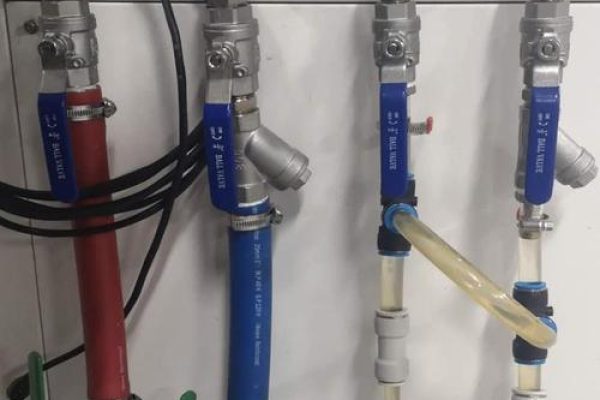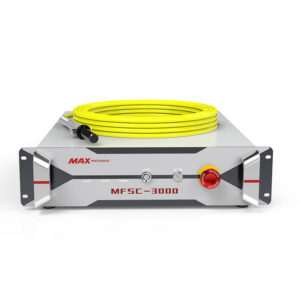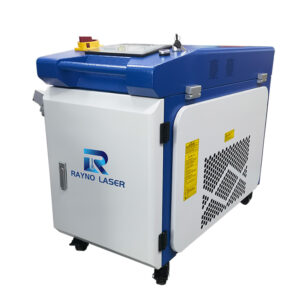As winter approaches, ensuring your laser machines remain protected against freezing temperatures is critical. Whether you operate a fiber laser welding machine, laser cleaning machine, or laser cutting machine, implementing the proper antifreeze measures can prevent costly repairs and machine downtime. This guide will answer some essential questions and offer practical tips for winter freeze protection.
What is Freeze Protection for Laser Machines?
Freeze protection refers to the measures taken to safeguard your laser equipment from damage caused by freezing temperatures. Most laser machines, including handheld laser welding machines, laser cleaning machine and metal laser cutting machines, rely on water cooling systems to maintain stable operating temperatures. However, when water freezes, it expands, which can lead to severe damage such as:
- Ruptured cooling pipes and components.
- Irreparable damage to the laser source or machine core.
- Increased repair costs or complete equipment failure.
Understanding freeze protection is vital for maintaining the long-term performance and reliability of your laser machines during colder months.
Laser Machine Antifreeze Guide Tips
1. Maintain a Stable Environment Temperature
Ensure the operating environment remains above 20°C. Use heaters or insulation if necessary to maintain this temperature.
For portable setups or mini laser welding machines, consider relocating the equipment to a temperature-controlled space during winter.
2. Keep the Water Chiller Running
Run the water chiller continuously, even when the machine is idle. Set both low and standard-temperature water circuits to around 5°C, just above freezing. This prevents water in the cooling system from reaching the freezing point.
Continuous operation helps avoid temperature fluctuations, which are common causes of freezing.
3. Use Antifreeze Solutions
Replace regular cooling water with antifreeze solutions, especially if the chiller cannot operate continuously. Choose antifreeze suitable for your equipment, such as professional-grade ethylene glycol or propylene glycol blends.
Select the correct antifreeze-water ratio based on your local temperature:
- 60% antifreeze, 40% water: Protects down to -45°C.
- 50% antifreeze, 50% water: Protects down to -35°C.
- 40% antifreeze, 60% water: Protects down to -25°C.
Remember, antifreeze solutions must be replaced with deionized water after winter to maintain cooling efficiency after winter.
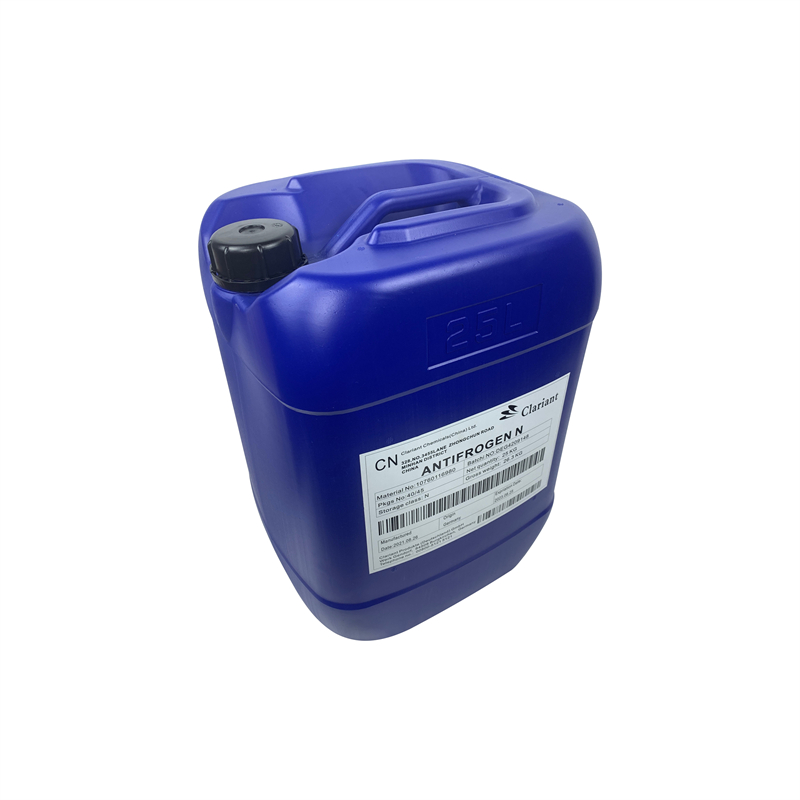
Commonly used laser antifreeze
4. Drain Cooling Systems During Long-Term Storage
If your laser machine will not be in use for an extended period, such as a portable laser welding machine, drain the cooling system completely. Residual water left in pipes and components can freeze, causing damage.
Use clean compressed air to flush out water from the system. Ensure no water remains in pipes or components like QBH connectors.
5. How to Drain Antifreeze or Water from Laser Machines or Laser Sources?
Here is a step-by-step guide:
A. Detach the Inlet and Outlet Water Hoses:
Begin by disconnecting the water pipes from the inlet and outlet ports of the laser source.
B. Inject Compressed Air:
Use clean, compressed air to remove residual water:
Insert compressed air (with a pressure of less than 0.1 MPa) into the inlet port.
Ensure the compressed air is dry and free of contaminants to avoid introducing moisture or particles into the cooling system.
Allow the water to drain fully from the outlet port. Keep injecting compressed air until no water flows out of the port.
C. Flush the System for 2 Minutes:
After water flow ceases, continue blowing compressed air through the inlet port for an additional two minutes to ensure complete removal of any trapped water.
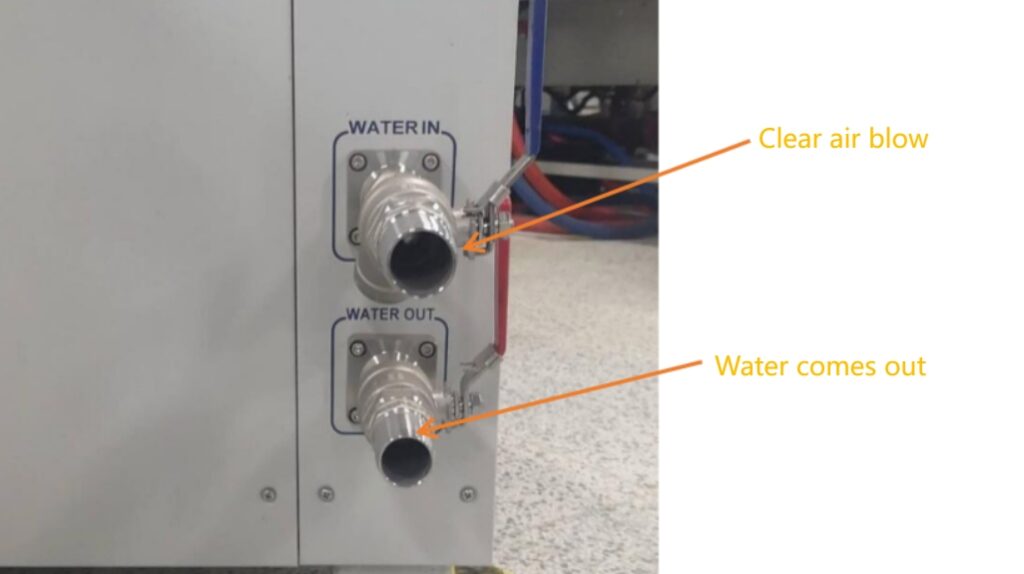
D. Drain the QBH Interface:
For machines with a QBH connector, carefully inject clean compressed air into the QBH inlet port. Use a pressure below 0.1 MPa to avoid damaging the optical fiber.
Ensure all water is drained from the QBH interface.
E. Seal the Ports:
Once the system is completely drained, seal the inlet and outlet ports of the laser source and QBH connector with protective caps. This prevents dust or contaminants from entering the machine.
F. Additional Tips:
Always use clean, dry air to prevent introducing moisture into the system.
Avoid using high-pressure air, as it can damage sensitive components like the fiber or connectors.
Perform this procedure in a clean environment to maintain the integrity of the laser machine’s internal systems.
By carefully following these steps, you can ensure your laser machine is properly prepared for winter storage or maintenance, avoiding damage from residual water freezing or contamination. This process is essential for maintaining the longevity and performance of your laser equipment.
How Do I Keep My Laser from Freezing?
Here are actionable steps to keep your laser machines safe:
- Monitor Water Quality: Use only deionized water or antifreeze blends to prevent contamination, which could reduce the freeze protection capacity.
- Check the Machine Regularly: Perform daily inspections during winter to ensure the water temperature remains above freezing and there are no leaks or blockages in the system.
- Install Temperature Alarms: Equip your machine with temperature sensors that trigger alarms if the cooling water approaches freezing. This early warning system helps you take immediate action.
Winter Freeze Protection Guide for Fiber Lasers
Fiber lasers, such as high-power models used for cutting and welding, require special care during winter. Follow these tailored tips:
- Insulate the Cooling System: Wrap the machine’s water pipes and chiller components with thermal insulation materials to reduce heat loss.
- Regularly Test Antifreeze Levels: Use a refractometer to check the antifreeze concentration and ensure it aligns with your region’s winter temperatures.
- Protect External Connections: Cover external connections, such as water hoses, to prevent them from freezing. Consider quick-disconnect fittings for easier draining and maintenance.
Why is Antifreeze Protection Important?
Without proper antifreeze protection, your machine faces severe risks, including:
- Increased downtime due to repair needs.
- Voided warranties, as freezing damage is often excluded from coverage.
- Reduced lifespan and efficiency of the laser source and components.
By proactively following these antifreeze guide tips, you can ensure your laser machines—whether a mini laser welding machine, fiber laser cutting machine, or handheld laser cleaning machine—remain in optimal condition throughout the winter.
Proper freeze protection is not just a precaution; it is an essential part of laser machine maintenance. If you have any questions about implementing these measures or need tailored solutions for your equipment, reach out to our team of experts. Keep your laser machines running smoothly and efficiently, no matter how cold it gets!

